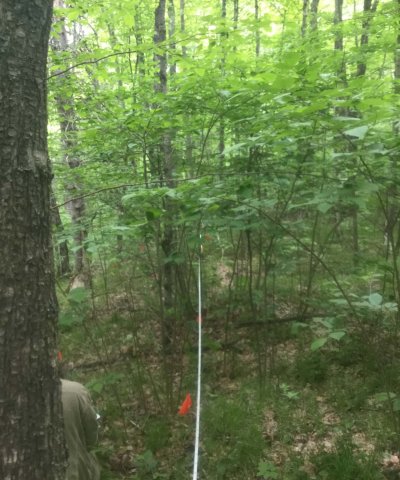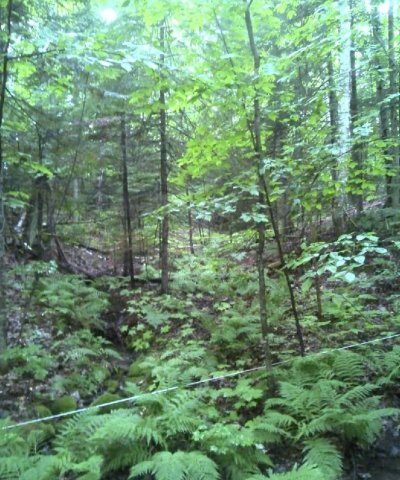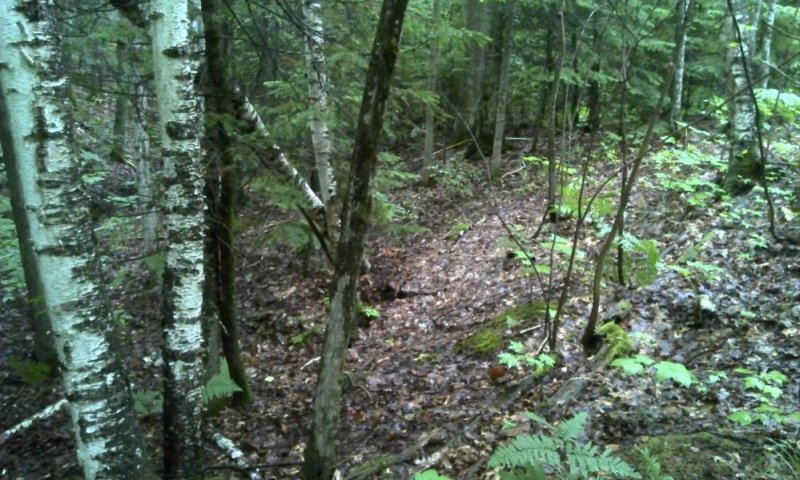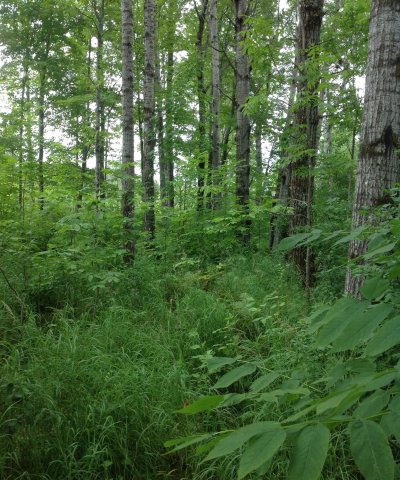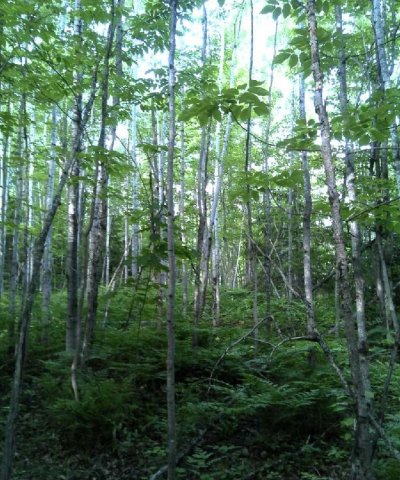

Natural Resources
Conservation Service
Ecological site R092XY014WI
Loamy Uplands
Last updated: 4/09/2020
Accessed: 12/18/2025
General information
Provisional. A provisional ecological site description has undergone quality control and quality assurance review. It contains a working state and transition model and enough information to identify the ecological site.
MLRA notes
Major Land Resource Area (MLRA): 092X–Superior Lake Plain
The Wisconsin portion of the Superior Lake Plain (MLRA 92) corresponds very closely to the Superior Coastal Plain Ecological Landscape published by Wisconsin Department of Natural Resources (WDNR 2015). The following brief overview of this MLRA is borrowed from that publication.
The Superior Coastal Plain is bordered on the north by Lake Superior and on the south by the Northwest Sands, Northwest Lowlands, and North Central Forest Ecological Landscapes. The total land area is approximately 1.2 million acres, which mostly consists of privately-owned forestland. The climate is strongly influenced by Lake Superior, resulting in cooler summers, warmer winters, and greater precipitation compared to more inland locations. The most extensive landform in this ecological landscape is a nearly level plain of lacustrine clays that slopes gently northward toward Lake Superior. The coastal plain is cut by deeply incised stream drainages and interrupted by the comparatively rugged Bayfield Peninsula.
During the Late Wisconsin glacial period, this area was covered with the advancing and retreating lobes of Superior and Chippewa. The landscape was rippled with moraines, but they were subdued by deposition of lacustrine materials. As the glaciers receded, glacial lakes riddled the landscape—most notably, Glacial Lake Duluth. The glacier receded eastward, exposing the western Lake Superior Basin. The ice covered the eastern basin, blocking the outlet of the lake, and continued to recede and contribute meltwaters that filled the glacial lake. The deep, red clays were deposited during this period of glacial lakes. The meltwaters from the glacier also contained sands which were deposited along the edge of the glacial lakes as beach deposits. Deep, narrow valleys have since been carved by rivers and streams flowing north into Lake Superior.
Historically, the Superior Coastal Plain was almost entirely forested. Various mixtures of eastern white pine (Pinus strobus), white spruce (Picea glauca), balsam fir (Abies balsamea), white birch (Betula papyrifera), balsam poplar (Populus balsamifera), quaking aspen (Populus tremuloides), and northern white-cedar (Thuja occidentalis) occurred on the fine-textured glacio-lacustrine deposits bordering much of the Lake Superior coast. Sandy soils, sometimes interlayered with clays, occur in some places. Such areas supported forests dominated by eastern white pine and red pine (Pinus resinosa). Eastern white pine was strongly dominant in some areas, according to mid-19th century notes left by surveyors of the federal General Land Office (Finley, R. 1976). Dry-mesic to wet-mesic northern hardwoods or hemlock-hardwood forests were prevalent on the glacial tills of the Bayfield Peninsula. Large peatlands occurred along the Lake Superior shoreline, associated with drowned river mouths.
Classification relationships
Habitat Types of N. Wisconsin (Kotar, 2002): Three sites key out to Acer saccharum / Athyrium felix-femina – Rubus pubescens [AAtRp] and the remaining sites each key out one of the following: Acer saccharum / Clintonia borealis [ACl], Acer rubrum – Abies balsamea / Sanicula spp. [ArAbSn], and Pinus strobus – Acer rubrumm / Vaccinium angustifolium – Aralia nudicaulis – Polygonatum pubescens variant [PArVAa-Po].
Biophysical Setting (Landfire, 2014): This is ES is mapped as, Laurentian – Acadian Northern Hardwoods Forest – Hemlock, Laurentian – Acadian Sub-boreal Mesic Balsam Fir-Spruce Forest, Laurentian – Acadian – Northern Pine – (Oak) Forest, North Central Interior Dry-Mesic Oak Forest & Woodland, and North Central Interior Maple – Basswood Forest. The ES is best represented by Northern hardwoods Forest and North Central Interior Maple – Basswood Forest.
WDNR Natural Communities (WDNR, 2015): This ES is most similar to Northern Mesic and Northern Wet-mesic Forests.
USFS Subregions: Superior-Ashland Clay Plain Subsection (212Ya); May contain small areas of Ewen Dissected Lake Plain Subsection (212Jo), Winegar Moraines Subsection (212Jc), Gogebic-Penokee Iron Range Subsection (212Jb), and NorthShore Highlands Subsection (212Lb)*
*Located in Upper Peninsula of Michigan (212J) and Minnesota (212Lb)
Major Land Resource Area (MLRA): Superior Lake Plain (92)
Ecological site concept
Loamy Uplands occurs throughout MLRA 92, but has a strong presence in the easternmost section. Sites occur on knolls, ridges, hillslopes, interfluves, terraces, and ravines located on till plains, lake plains, and outwash plains. Landform shape ranges from linear to convex. This ecological site is characterized by very deep, moderately well to well drained soils formed in loamy and silty till, in stratified silty glaciolacustrine deposits, or in stratified loamy glaciolacustrine or glaciofluvial deposits. Some areas include soil formed in a sandy glaciofluvial mantle over the loamy to silty deposits. Some small areas include soil formed in either loamy till having a developed fragipan or in loamy colluvium.
Some sites will have a seasonally high water table with a depth of 0 to 76 cm, but water table depth may exceed 152 cm during dry periods. The soils do not remain moist all year, differing this ES from Moist Loamy Flats and Wet Loamy Depressions. Water is primarily received through precipitation. Soils range from strongly acid to strongly alkaline. Some sites have carbonates present at 58 cm, but are absent in others. This range exists based on the soil parent materials; the sites with a sandy mantle are more acidic and lack carbonates. Sites without the sandy mantle are often more alkaline may have carbonates present.
In general terms, the Site’s capacity to support plant communities can be characterized as mesic to dry-mesic, in respect to available soil moisture and medium in terms of nutrient availability. As such, the Site is capable of supporting, at least temporarily, forest communities that may include any of the native upland tree species of northern Wisconsin. Mature, or late successional communities have historically been dominated by sugar maple (Acer saccharum) and eastern hemlock (Tsuga canadensis). Common associates included red maple (Acer rubrum), yellow birch (Betula alleghaniensis), basswood (Tilia Americana) and white ash (Fraxinus Americana). In some stands red oak (Quercus rubra) and white pine (Pinus strobus) also occurred. The latter two were most likely present as remnants of stands that originated following post-logging fires.
Current forest communities on this Ecological Site are dominated by sugar maple and red maple, if they originated in cut-over stands that were not also burned, or by aspen and white birch, if logging was followed by fire. Basswood, white ash and yellow birch are often minor associates. In most stands there is conspicuous absence of hemlock, which had been a dominant or co-dominant species, with sugar maple, in pre European-settlement forests. The reason appears to be a combination of lack of seed source and unfavorable conditions for seedling establishment in current early to mid-successional communities. Common ground flora species are raspberries, partridge berry, grasses, sedges, large-leaved aster, wild strawberry, dogwoods, and beaked hazelnut.
Associated sites
| R092XY007WI |
Wet Loamy or Clayey Lowlands These sites are poorly drained soils formed in mainly clayey though sometimes glaciofluvial and silty glaciolacustrine sediments. They have a seasonally high water table and remain saturated for much of the growing season, creating hydric conditions. HGM criteria: recharge, Depressional. The loamy sites are often adjacent to Loamy Uplands but located on a lower landscape position in the drainage sequence. |
|---|---|
| R092XY011WI |
Moist Loamy Lowlands These sites are somewhat poorly drained soils formed in various parent materials, but primarily are primarily loamy. The loamy texture causes the soil to remain moist for much of the growing season but does not remain saturated long enough to form hydric conditions. These sites are often adjacent to Loamy Uplands but located on a lower landscape position in the drainage sequence. |
Similar sites
| R092XY013WI |
Sandy Uplands These sites are formed primarily in sandy outwash or beach deposits, and some are underlain by finer glaciofluvial material. Sites are moderately well to well drained, but sites with underlying finer materials may have extended saturation in spring and fall. Sites range from strongly acid to neutral and may contain carbonates. These sites are found in a similar landscape as Loamy Uplands but are coarser textured and in a different drainage sequence. |
|---|---|
| R092XY015WI |
Clayey Uplands These sites are deep, moderately well to well drained soils that formed in clayey till or glaciolacustrine deposits. Some sites have a sandy or loamy mantle. Sites have a seasonally high water table but does not remain saturated for extended periods. Sites range from strongly acid to moderately alkaline, with carbonates present in many sites. These sites are found in a similar landscape as Loamy Uplands but are finer textured and in a different drainage sequence. |
| R092XY009WI |
Loamy Sandstone Uplands These sites are shallow loamy soils that overly sandstone bluffs along the shore of Lake Superior. They are moderately well drained soils but have a seasonally high water table. The soils range from strongly acid to neutral. These sites are truncated which differs them from Loamy Uplands. |
Table 1. Dominant plant species
| Tree |
(1) Acer saccharum |
|---|---|
| Shrub |
(1) Corylus cornuta |
| Herbaceous |
(1) Eurybia macrophylla |
Click on box and path labels to scroll to the respective text.
| T1A | - | Major stand replacing disturbance e.g. blow-down and fire, or clear-cutting, followed by fire. |
|---|---|---|
| T1B | - | Elimination of forest cover, application of agricultural practices. |
| R2A | - | Time and natural succession. |
| T2A | - | Elimination of forest cover, application of agricultural practices. |
| T3A | - | Cessation of agricultural practices, natural, or artificial afforestation. |
State 1 submodel, plant communities
| 1.1A | - | Natural mortality in the oldest age classes, sporadic small-scale blow-downs and ice storms, create openings for entry of mid-tolerant species, such as red oak and red maple. |
|---|---|---|
| 1.2A | - | Time and natural succession |
State 2 submodel, plant communities
| 2.1A | - | Red oak and red maple regenerating under aspen -- paper birch canopy |
|---|---|---|
| 2.1B | - | Time and natural succession. |
| 2.2A | - | Time and natural succession. |
